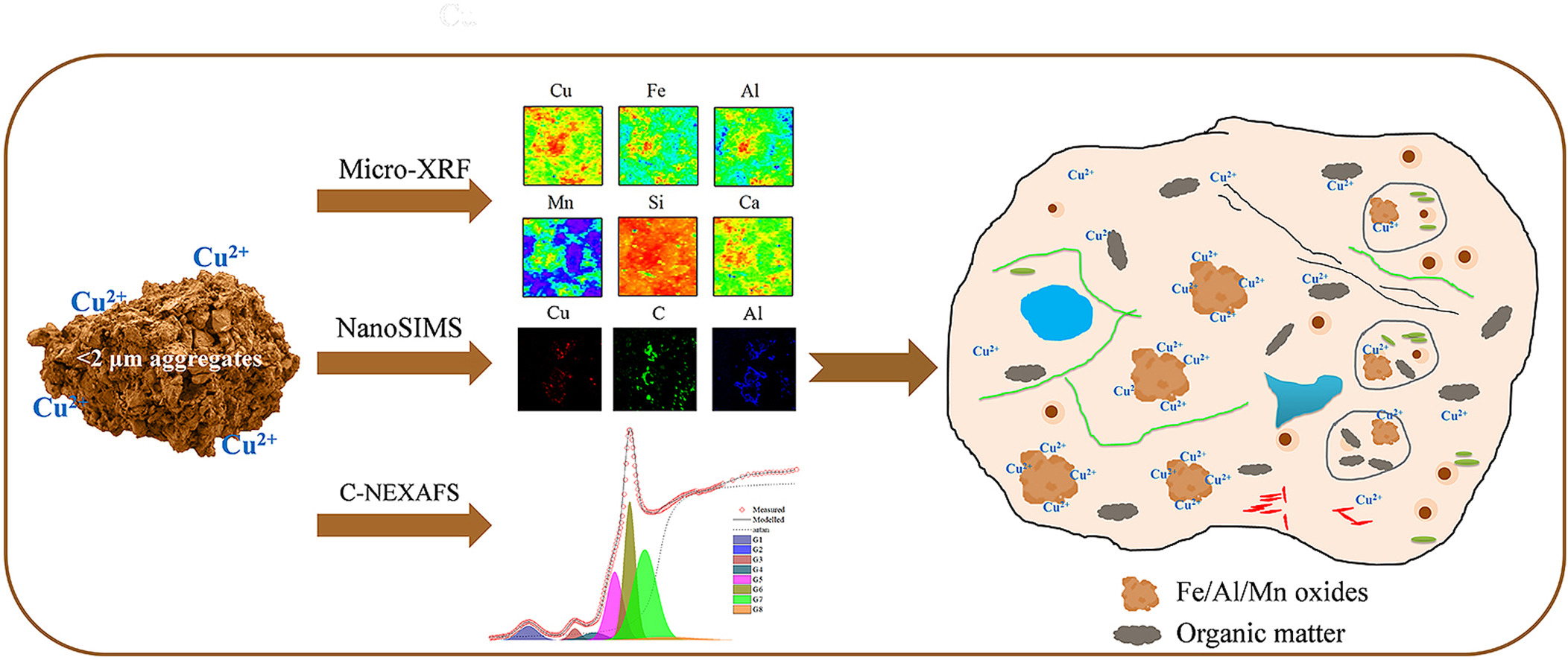Highlights
- Fine soil aggregates play vital roles in retention of heavy metals.
- Aging promotes binding of Cu onto inorganic components in fine aggregates.
- Cu tends to be accumulated with amorphous metal oxides during aging.
- Cu is governed mainly by aromatic and carboxyl C within organic fractions.
Abstract
Aggregates are the basic structural units of soils. Fine soil aggregates are crucial pools for the retention of heavy metals. In this study, we evaluated the accumulation characteristics of exogenous Cu in the <2 μm aggregate fractions from a Histosol for an aging of 28 months by nano-scale secondary ion mass spectrometry (NanoSIMS) and synchrotron micro-X-ray fluorescence (micro-XRF). Results showed that the correlations between Cu and Fe/Al/Mn increased from 0.10–0.17 to 0.55–0.63, while those between Cu and C decreased sharply from 0.61 to 0.10 and then increased to 0.36, indicating that exogenous Cu tended to accumulate on inorganic mineral components. The carbon NEXAFS data suggested that the relative content of aromatic and carboxyl carbon decreased from 8.1% and 30.8% to 3.6% and 17.8% at month 12, and increased to 5.9% and 26.0% at month 28, respectively. However, an opposite trend was found for alkyl and carbonyl carbon which showed an increase at month 12 followed by a decrease afterwards. The consistency for the correlations between Cu and C with the changes of aromatic and carboxyl carbon indicated their key roles in the binding of Cu on the organic components in the <2 μm aggregates of Histosol. These direct observations offer a better understanding on the interactions of heavy metals with various soil components which is critical for the risk assessment and fate evaluation of exogenous Cu in soil ecosystems.
